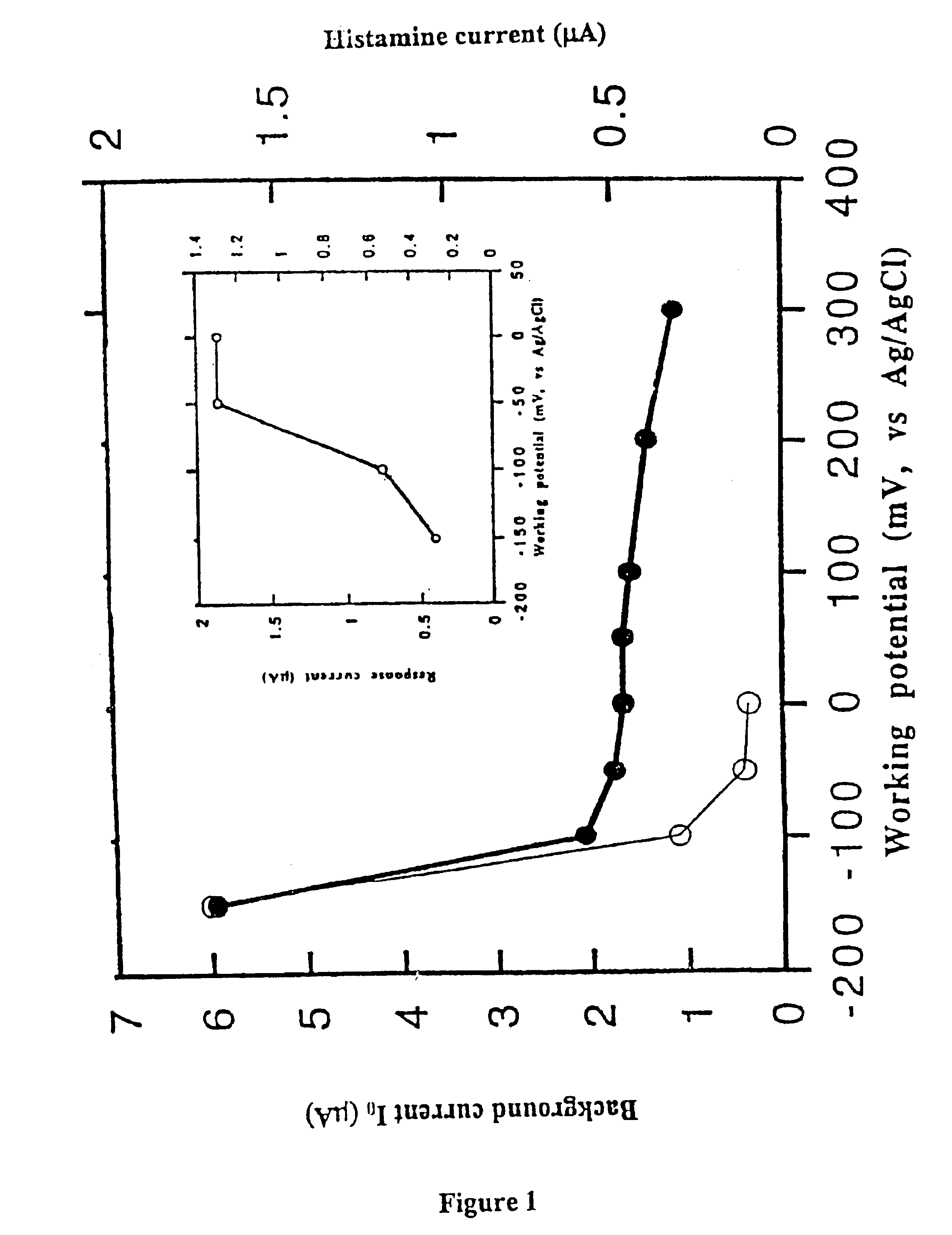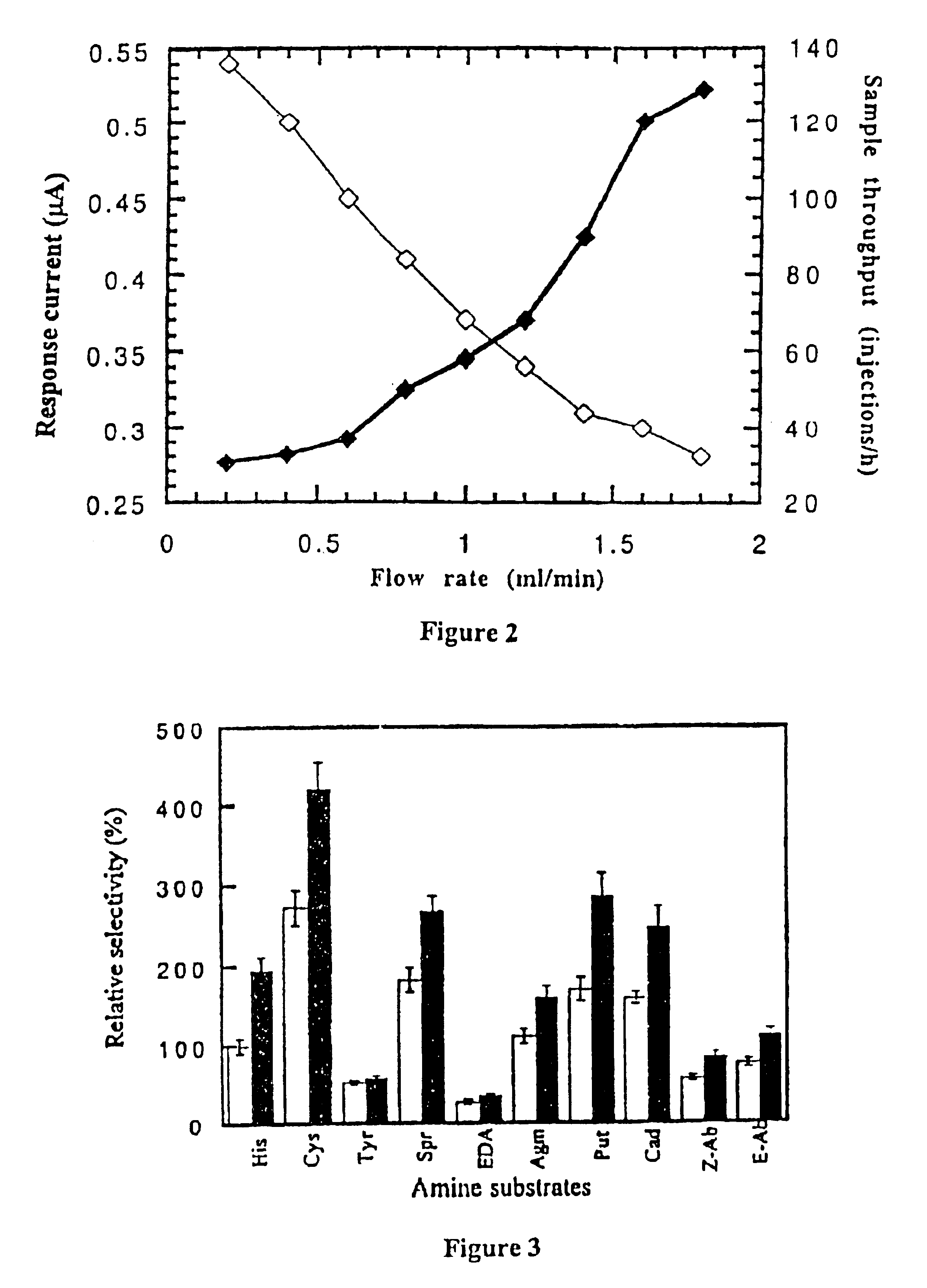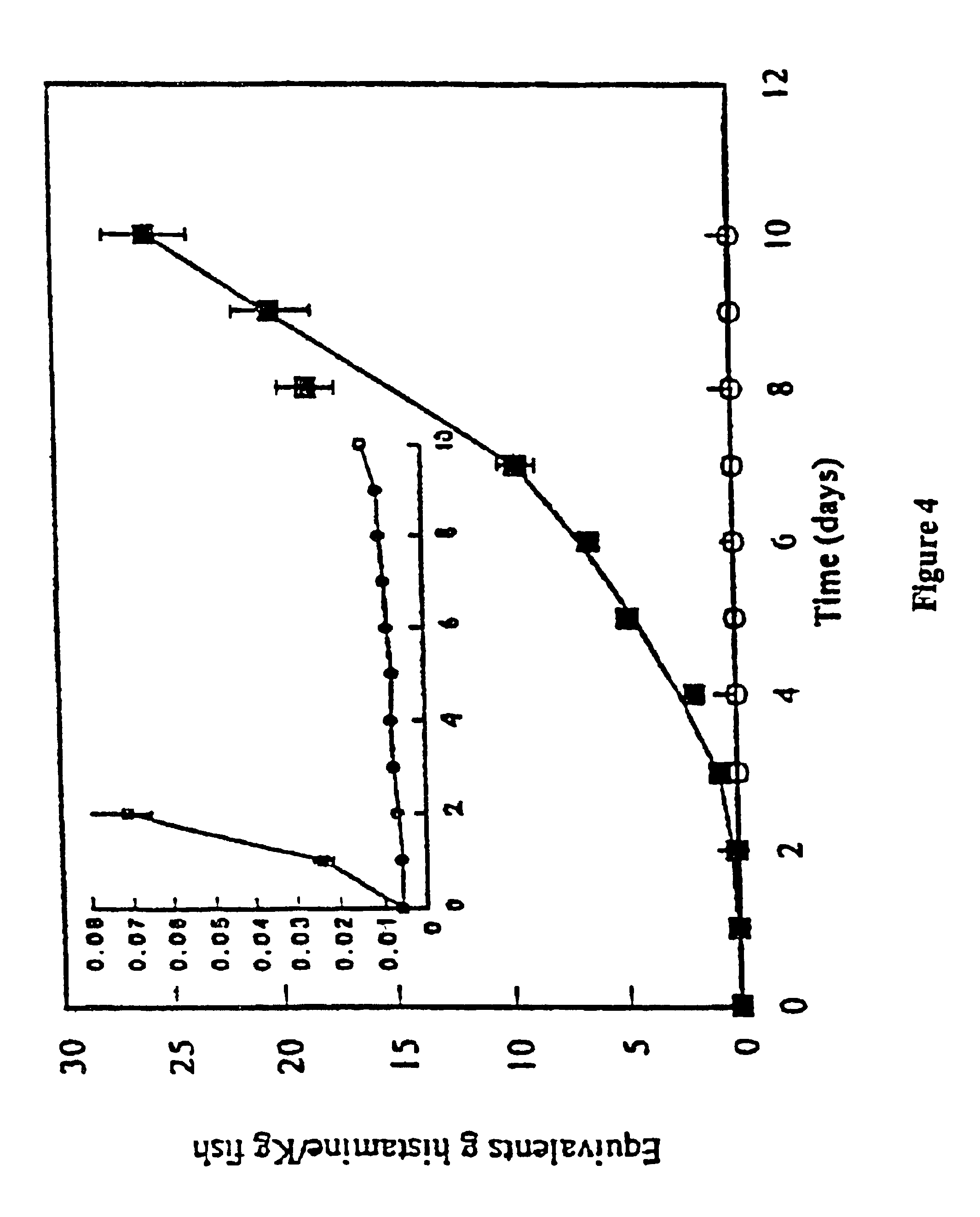Biosensor
a biosensor and sensor technology, applied in the field of biosensors, can solve the problems of high cost, inconvenient routine use, and inability to select and sensitive approaches, and achieve the effects of simple and handy analytical methods, high accuracy, and high cos
- Summary
- Abstract
- Description
- Claims
- Application Information
AI Technical Summary
Benefits of technology
Problems solved by technology
Method used
Image
Examples
Embodiment Construction
[0016]Amine oxidase represents a class of enzymes with a ubiquitous distribution in mammals, plants and micro-organisms. However, the structure, selectivity and biological functions are very different, depending on the isolation source. Grass-pea amine oxidase, for instance, is a copper-containing amino oxidase, which besides the metal ions also contains an organic cofactor with a quinoide structure (topa-quinone) in its catalytic site.
[0017]In methods, where an amine oxidase is used, the enzyme is converting the amine to the corresponding aldehyde, with NH3 and H2O2 release, according to the following reaction I:
R—CH2—NR2+H2O2+O2→R—CHO+H2O2+NH3 I
[0018]Both oxygen consumption and hydrogen peroxide formation have been used for monitoring of biogenic amines on the basis of the above mentioned reaction.
[0019]It has surprisingly been shown that the interaction between the material of the electrode and the enzyme(s) resulted in a very selective and sensitive biosensor. The electrode ha...
PUM
 Login to View More
Login to View More Abstract
Description
Claims
Application Information
 Login to View More
Login to View More - R&D
- Intellectual Property
- Life Sciences
- Materials
- Tech Scout
- Unparalleled Data Quality
- Higher Quality Content
- 60% Fewer Hallucinations
Browse by: Latest US Patents, China's latest patents, Technical Efficacy Thesaurus, Application Domain, Technology Topic, Popular Technical Reports.
© 2025 PatSnap. All rights reserved.Legal|Privacy policy|Modern Slavery Act Transparency Statement|Sitemap|About US| Contact US: help@patsnap.com



